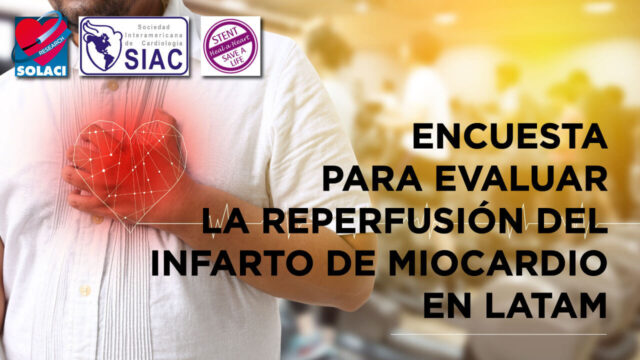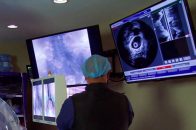The Latin American Society of Interventional Cardiology together with the Interamerican Society of Cardiology (SIAC) and the Stent-Save a Life! Initiative have developed a short survey (which can be answered in less than 5 minutes) to learn how ST-segment elevation acute coronary syndromes are treated in Latin America. The final objective of this survey is…
REVERSE-IT | Bentracimab: Progress on the Antidote for Ticagrelor in Emergency Scenarios
Optimizing an antiplatelet therapy after an acute coronary syndrome (ACS) aims at reducing the major adverse cardiac events (MACE) caused by atherosclerotic disease. Ticagrelor is a potent P2Y12 inhibitor that directly prevents platelet activation. It is characterized by a rapid and consistent onset of action throughout its administration (twice daily) and its proven pleiotropic effects,…
Is Epinephrine Superior to Adenosine in No-REFLOW?
In patients with acute coronary syndrome, no-reflow prevalence is 32%. Different drugs—such as adenosine, verapamil, nitroprusside, or nicardipine— have been used for its intracoronary treatment, thus resulting in arterial hypotension. The aim of this randomized study was to determine the effectiveness of the use of intracoronary epinephrine vs. adenosine in normotensive patients. The primary endpoint…
Acute Coronary Syndrome: What Is Safer, Antiaggregant Monotherapy or De-Escalation?
For several years it has been shown that 12-month dual antiplatelet therapy (DAPT) is mandatory for patients undergoing left main PCI for acute coronary syndrome (ACS). However, though this strategy does reduce thrombotic events and mortality, it also causes undesirable bleeding events followed by hospitalization and antiaggregation interruption for a period of time. A feasible…
IVUS in Acute Coronary Syndrome: A New Requirement?
The use of intravascular ultrasound (IVUS) has seen exponential growth across registries over the years, combined with mounting and increasingly robust evidence. The fact that it will enable us to characterize plaque morphology and extension prior the intervention, and even assess stent expansion post intervention, has turned it into a pillar of our efforts to…
Cangrelor: Additional Research Findings Not Translating into Clinical Practice
The potent and fast endovenous platelet inhibition provided by Cangrelor reduces ischemic events early in the course of acute coronary syndrome. However, and despite mounting evidence, the drug is not reaching the clinical practice. This is a sub-analysis of the CHAMPION PHOENIX, which sought the timing, number and type of early events that could be…
AHA 2021 | RAPID CABG: Safety of Early Surgical Intervention in Acute Coronary Syndrome
Suspending ticagrelor a couple of days before surgery was non-inferior to waiting 5-6 days in terms of bleeding in patients with acute coronary syndrome (ACS) requiring myocardial revascularization surgery. Patients who waited longer had more ischemic events and longer hospitalizations. Current American guidelines recommend waiting at least 5 days before operating on patients with ACS who…
ESC 2021 | ISAR-REACT 5: Prasugrel Superior to Ticagrelor in ACS across Kidney Function Spectrum
When we have to choose between two potent P2Y12 receptor inhibitors for a patient undergoing ACS with a planned invasive strategy, kidney function should not interfere in this decision. The main findings of this study were that prasugrel has lower risk of all cause death, MI or stroke, and also had a similar risk of…
The Role of Aspirin after the TWILIGHT-ACS
This analysis corroborates the potential benefit of ticagrelor monotherapy following a short period of dual antiaggregation (DAPT) in patients with acute coronary syndrome (ACS). This benefit consists of a significant bleeding reduction (3.6% vs. 7.6%, P < 0.001), without compromising ischemic events (4.3% vs. 4.4%, P = 0.84). The latter, however, could be seen as…
Ticagrelor or Prasugrel for Acute Patients Who Undergo Angioplasty
We are still asking the same question: ticagrelor or prasugrel? With narrow margins between these drugs in terms of efficacy and bleeding, it is difficult to decide which to prescribe. While it has certain methodological limitations, this research published in JAMA seems to clarify the picture at least for patients with acute coronary syndromes who…









